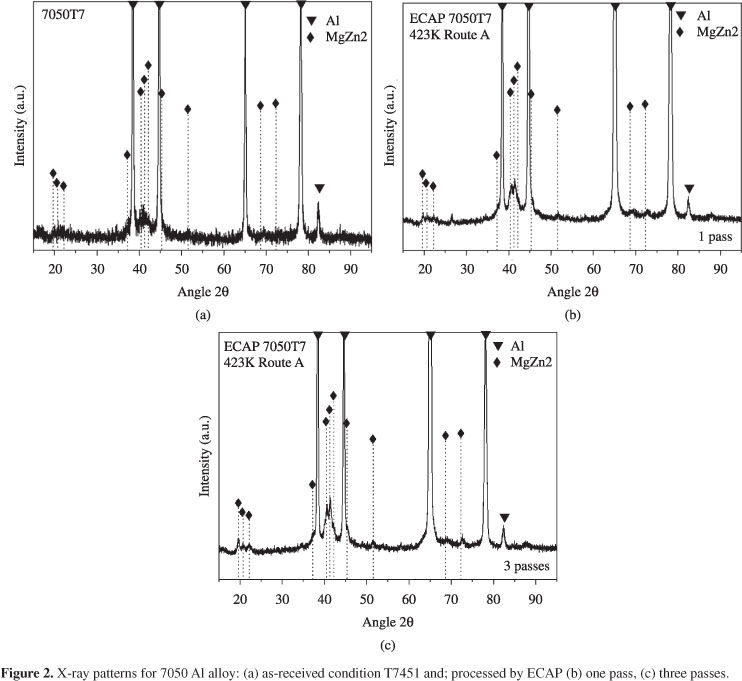High strength AA7050 aluminum alloy was processed by ECAP through route A in the T7451 condition. Samples were processed at 423 K, with 1 and 3 passes. The resulting microstructure was evaluated by optical microscopy (OM), scanning electron microscopy (SEM) and transmission electron microscopy (TEM). The phases were identified by X-ray diffraction (XRD) using monochromatic Cu Kα radiation. Rockwell B hardness and tensile tests were performed for assessment of mechanical properties. The microstructure was refined by the formation of deformation bands, with dislocation cells and elongated subgrains, with an average width of 240 nm, inside these bands. The number of deformation bands increased with the number of passes. A reduction of precipitates size was observed with increase in the number of passes, when compared to initial condition, probably resulting from particle fragmentation during ECAP. After three passes the precipitates tend to a more equiaxed morphology and have sizes smaller than 10 nm. Phases Η' and Η coexist in the microstructure, but Η is the dominant phase, mainly after three passes. The hardness of alloy after the first pass of ECAP is almost equal to the initial condition. After three passes the hardness showed a slight reduction which must be result from recovery process. There was a slight improvement in the yield strength and elongation after one pass, when compared to the initial T7451 condition. The improvement in the ultimate tensile strength was less significant.
severe plastic deformation; ECAP; aluminum alloy











